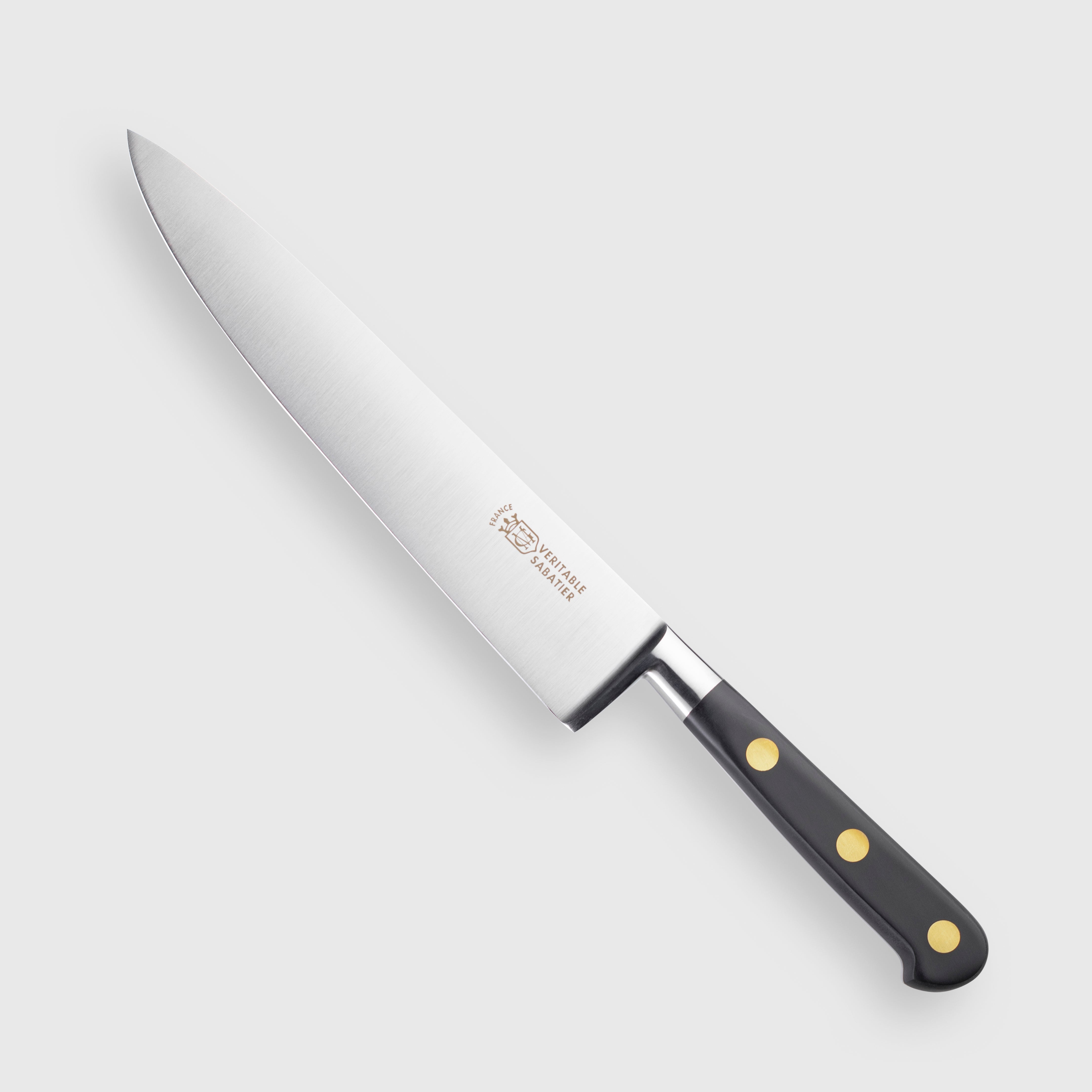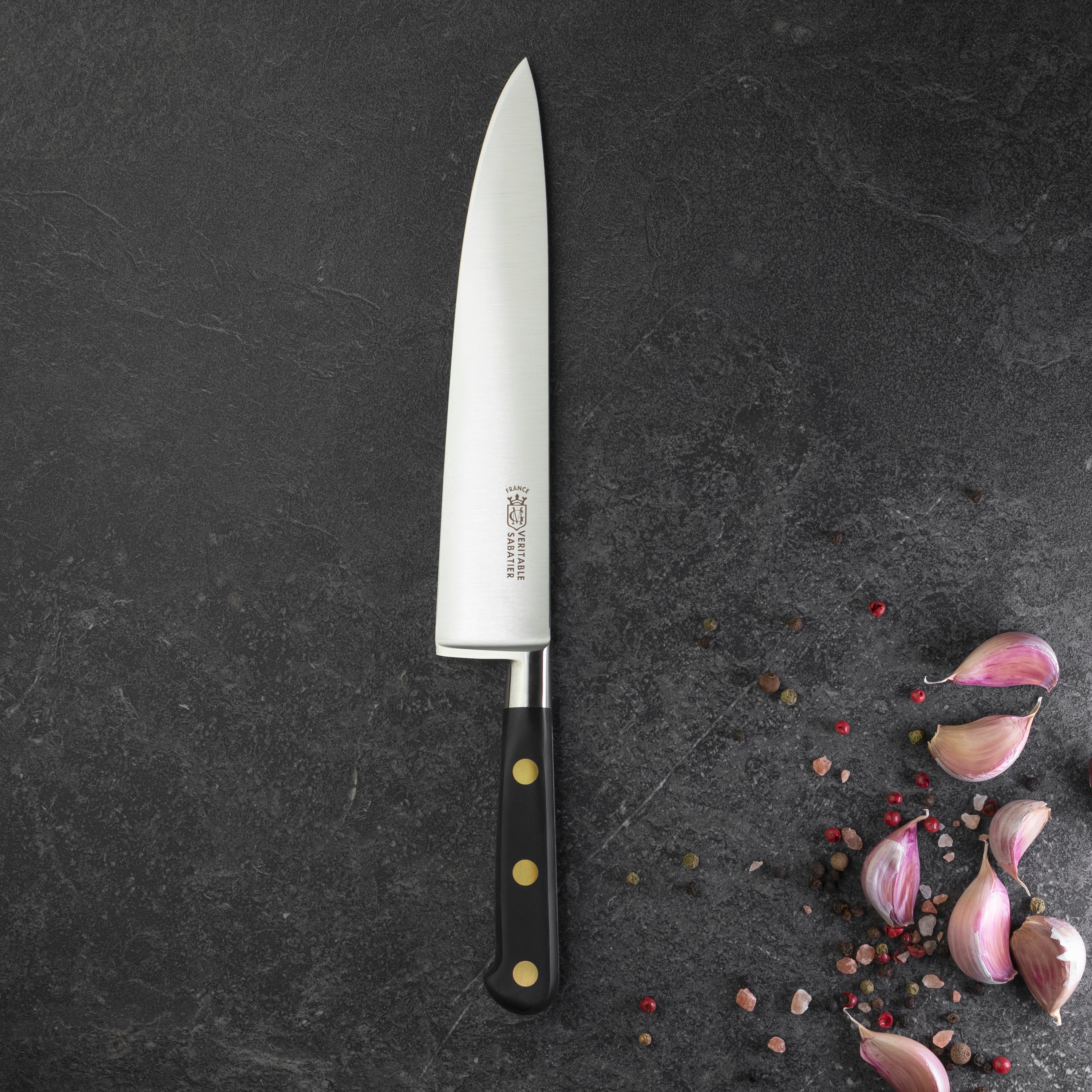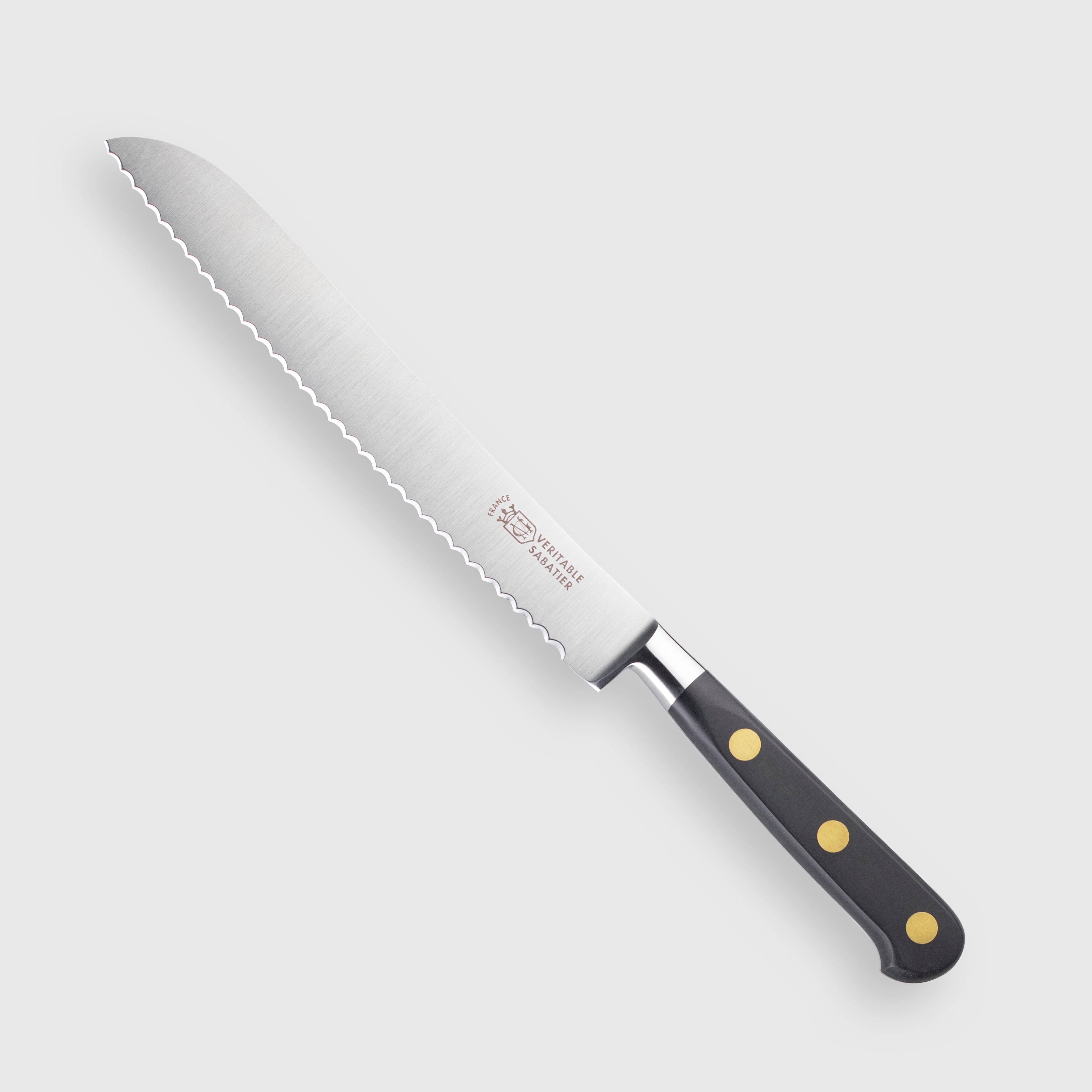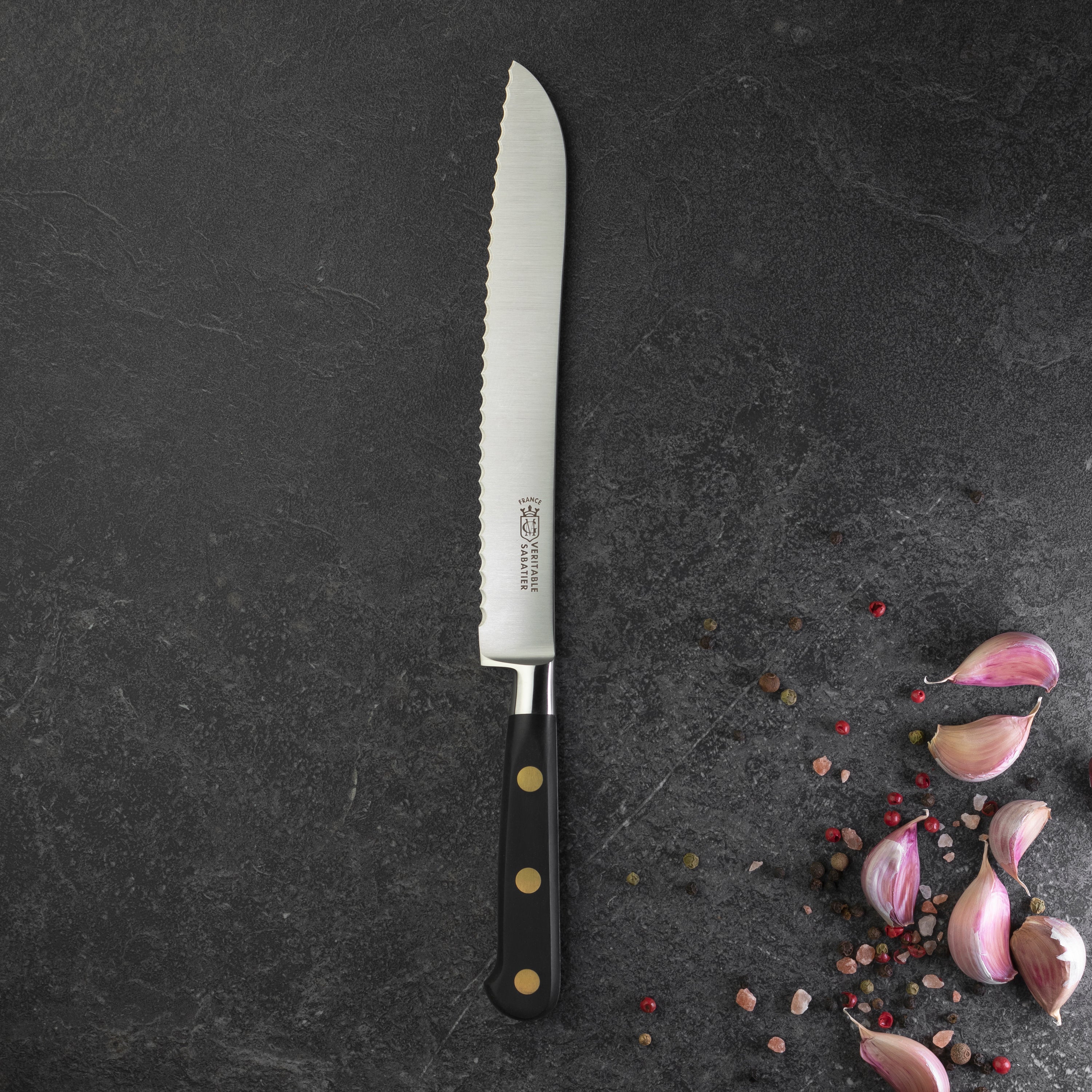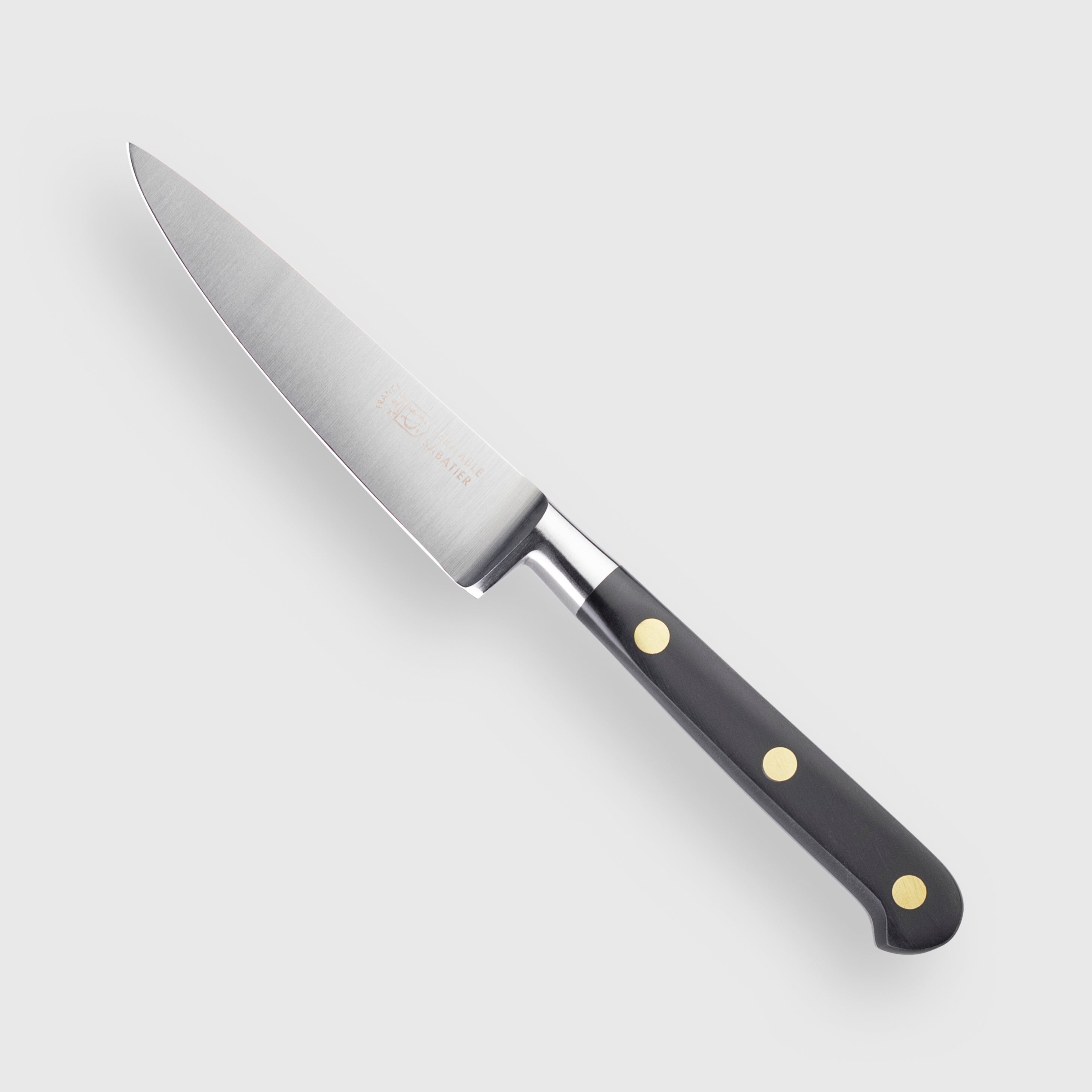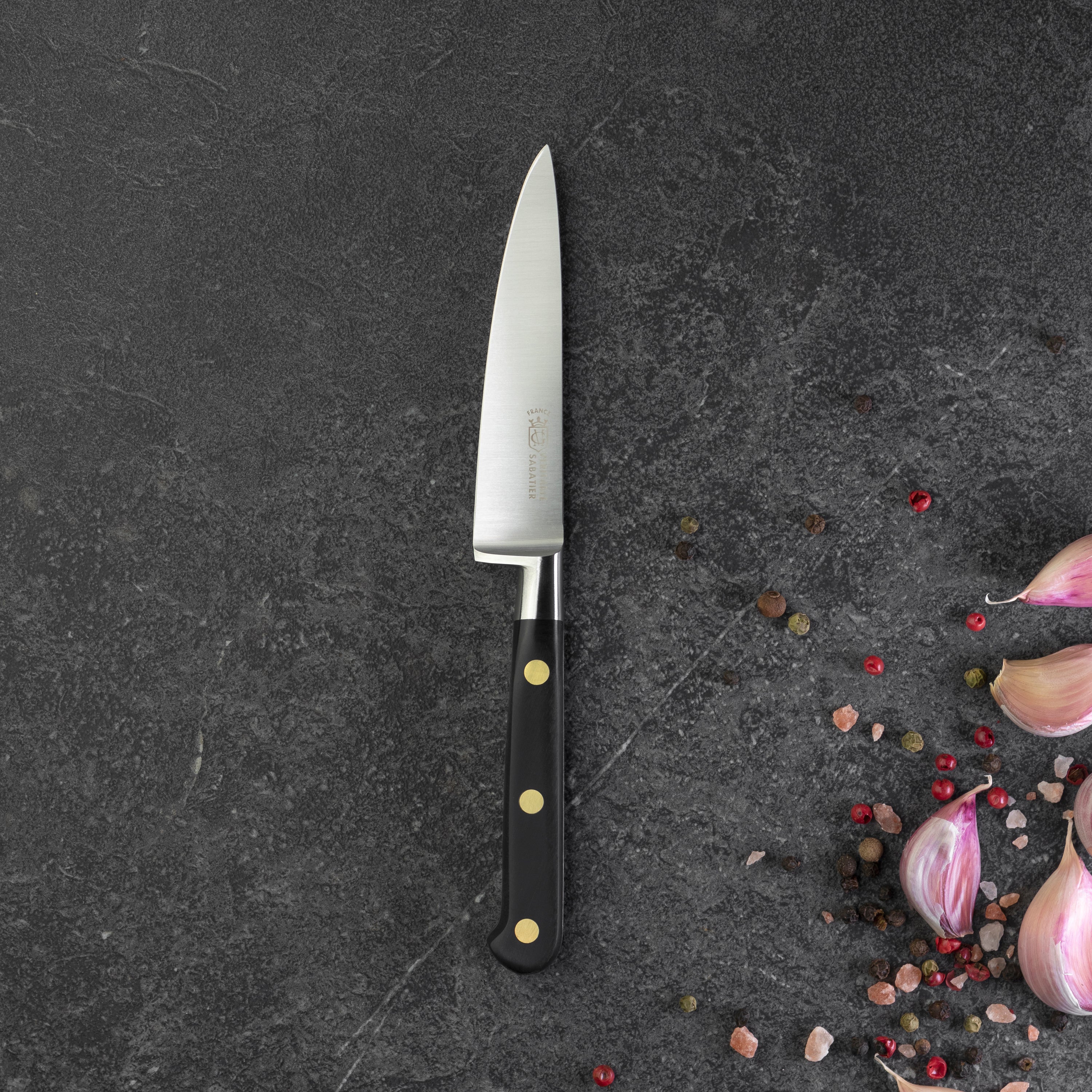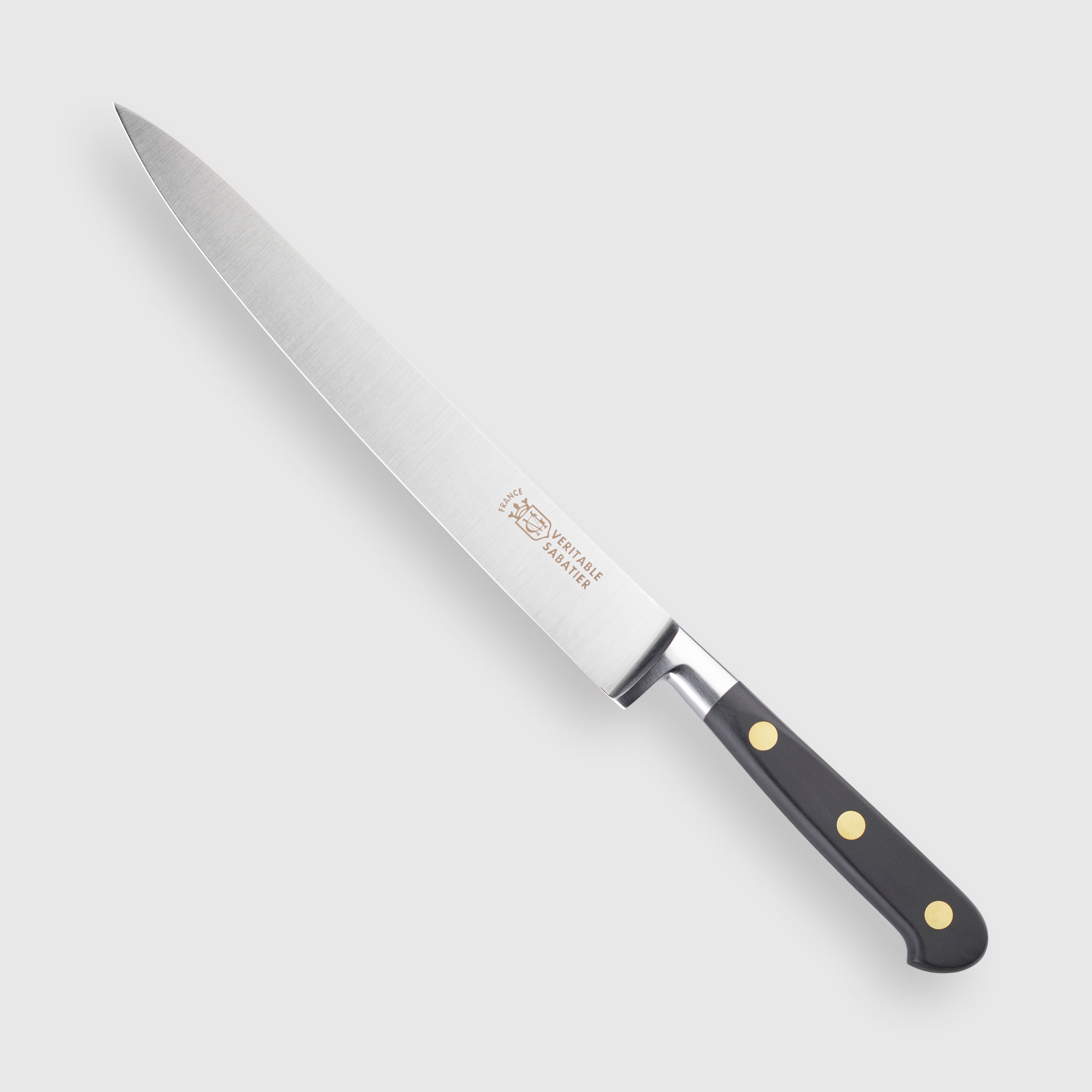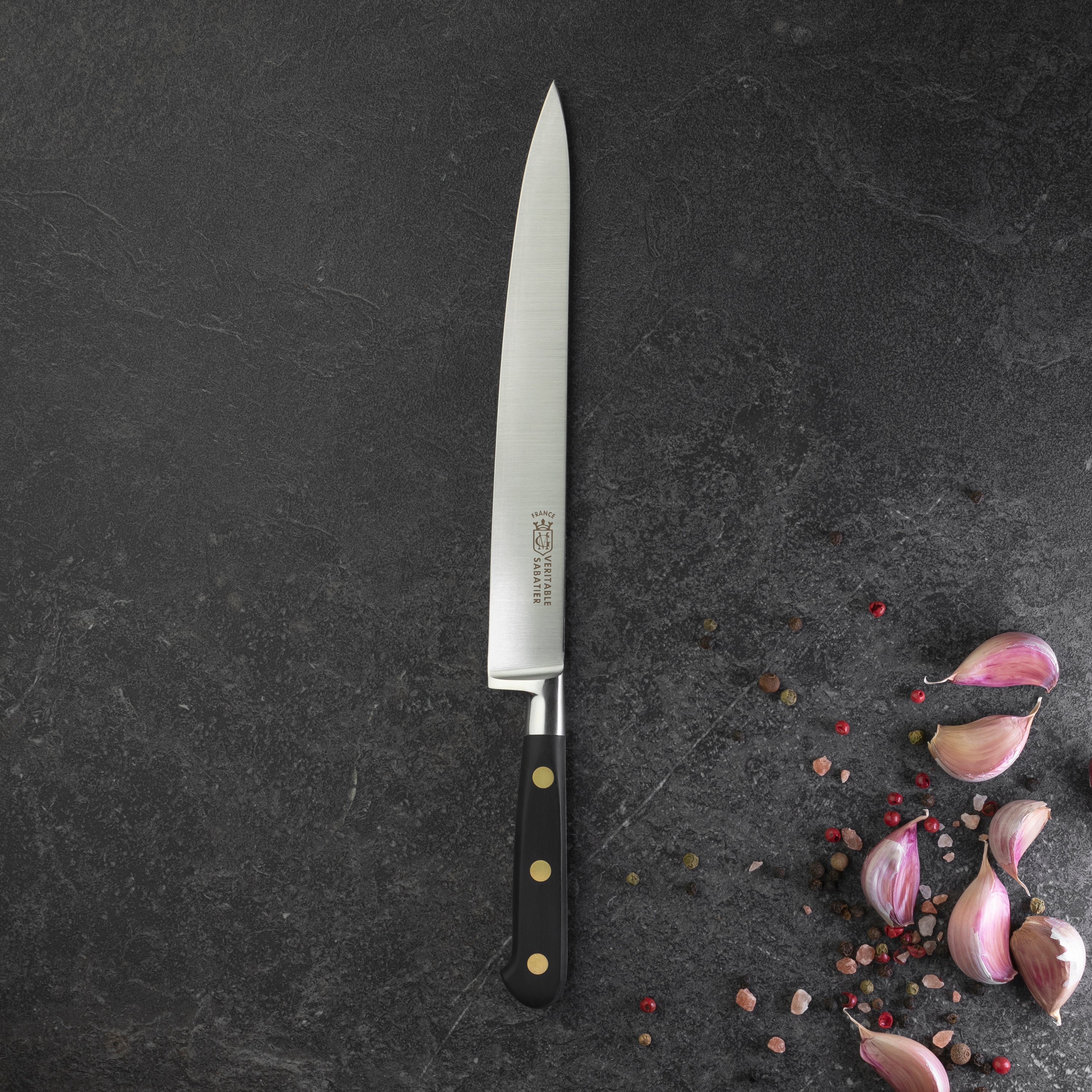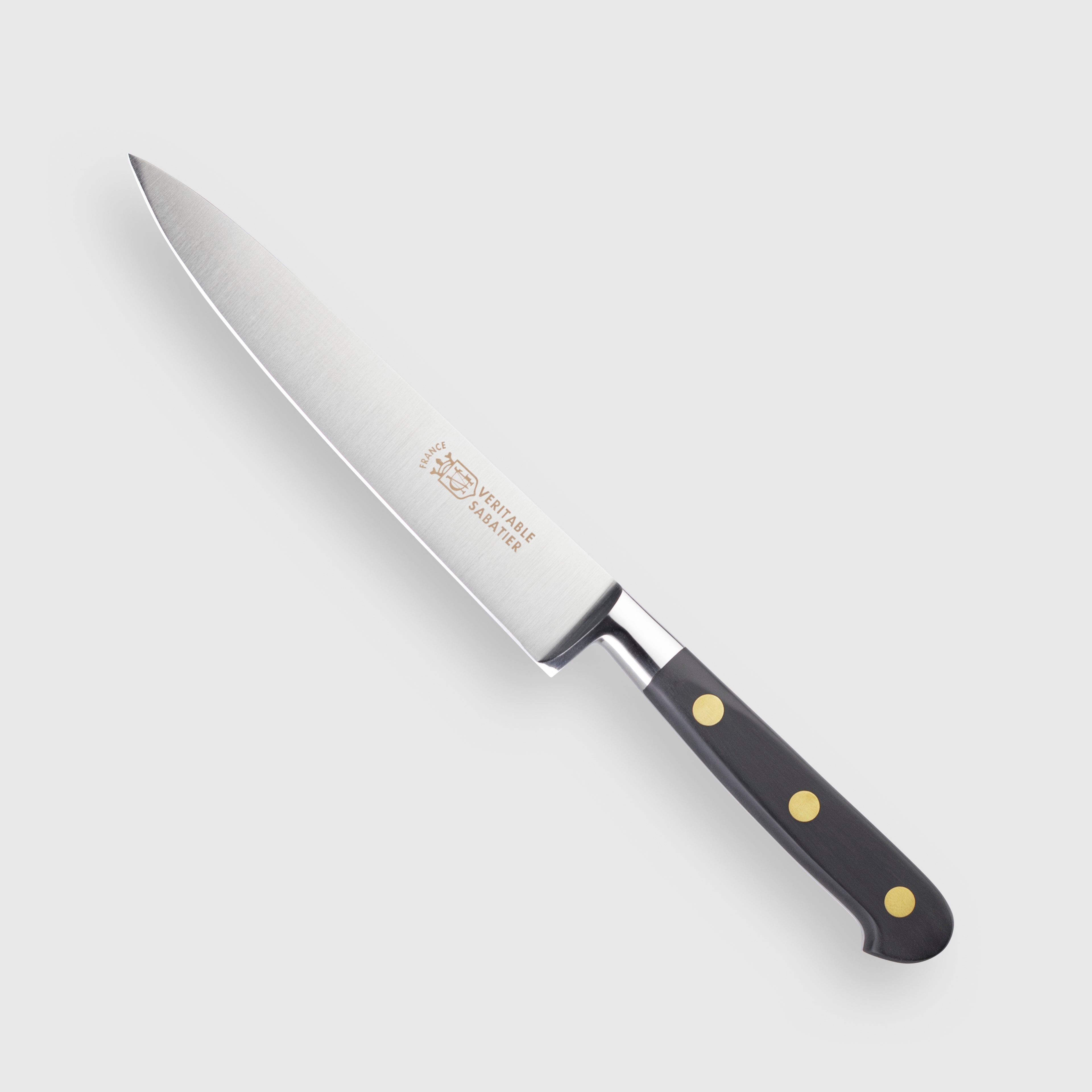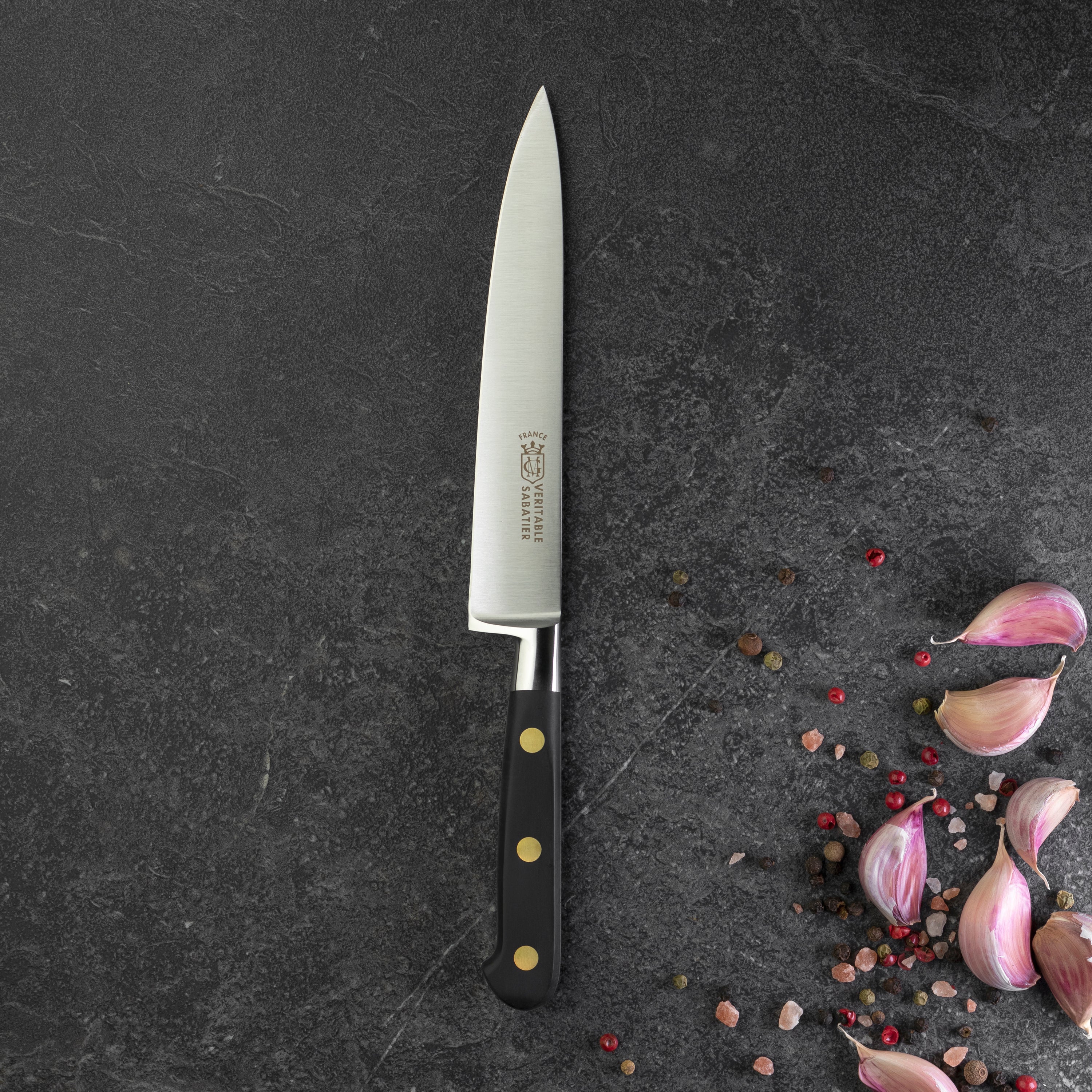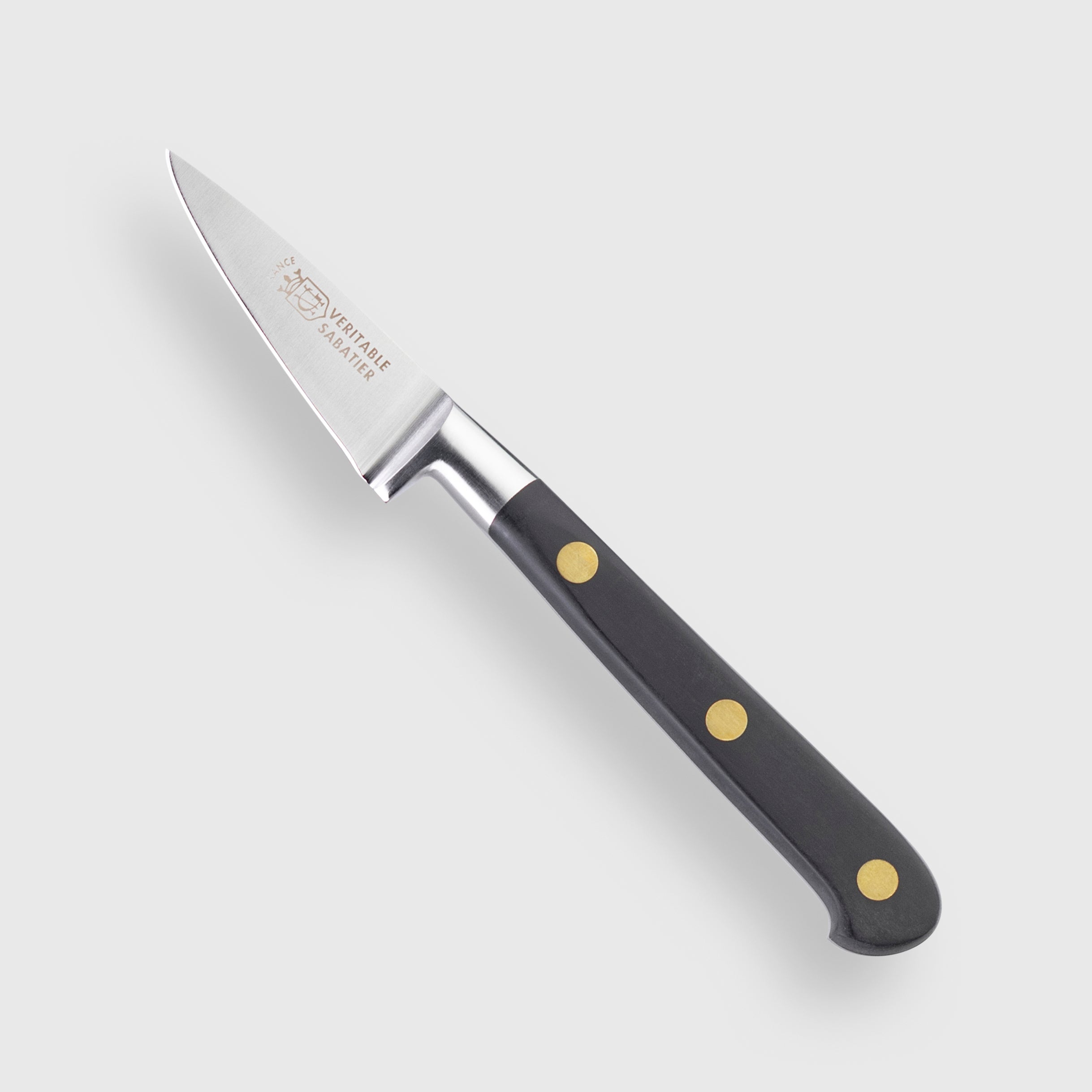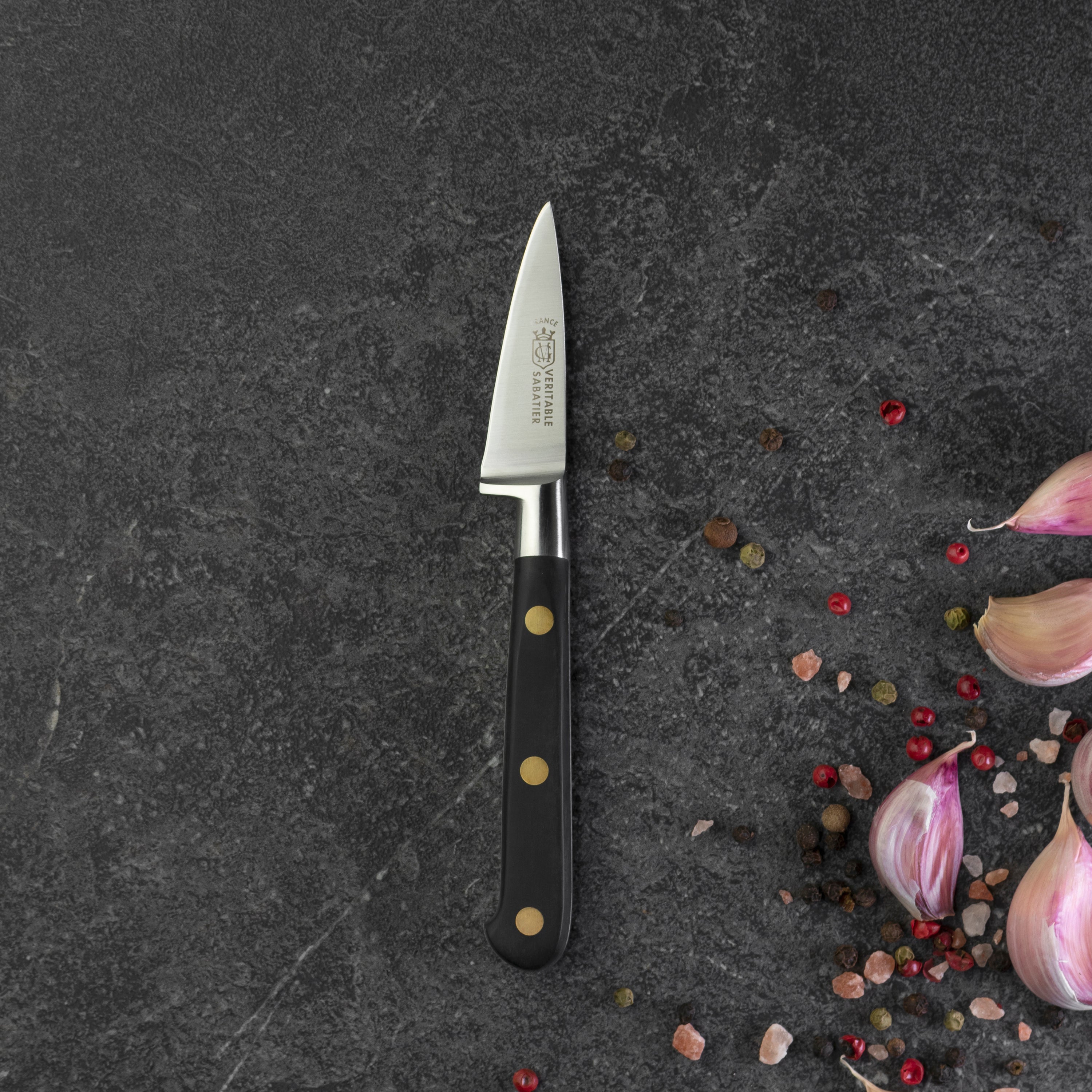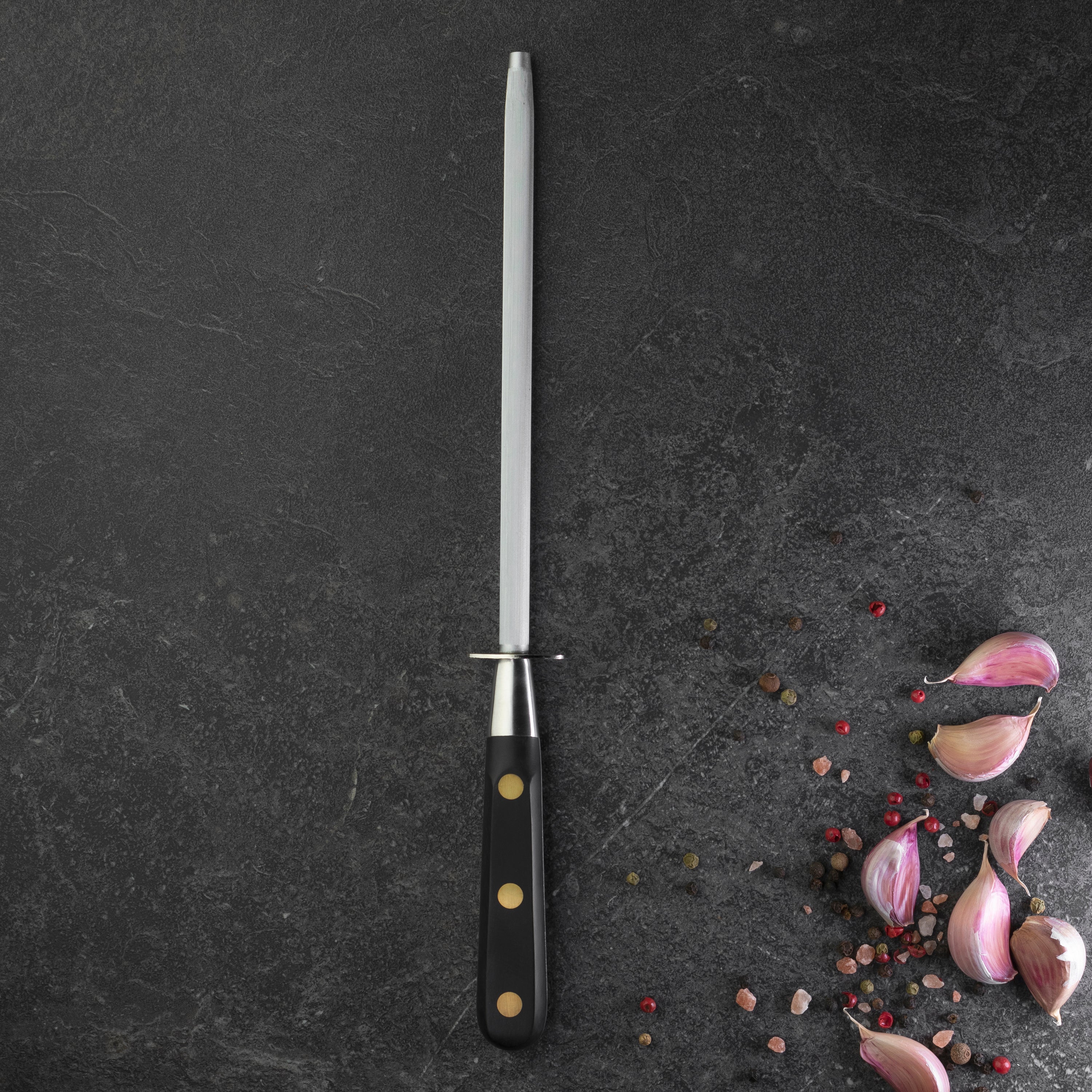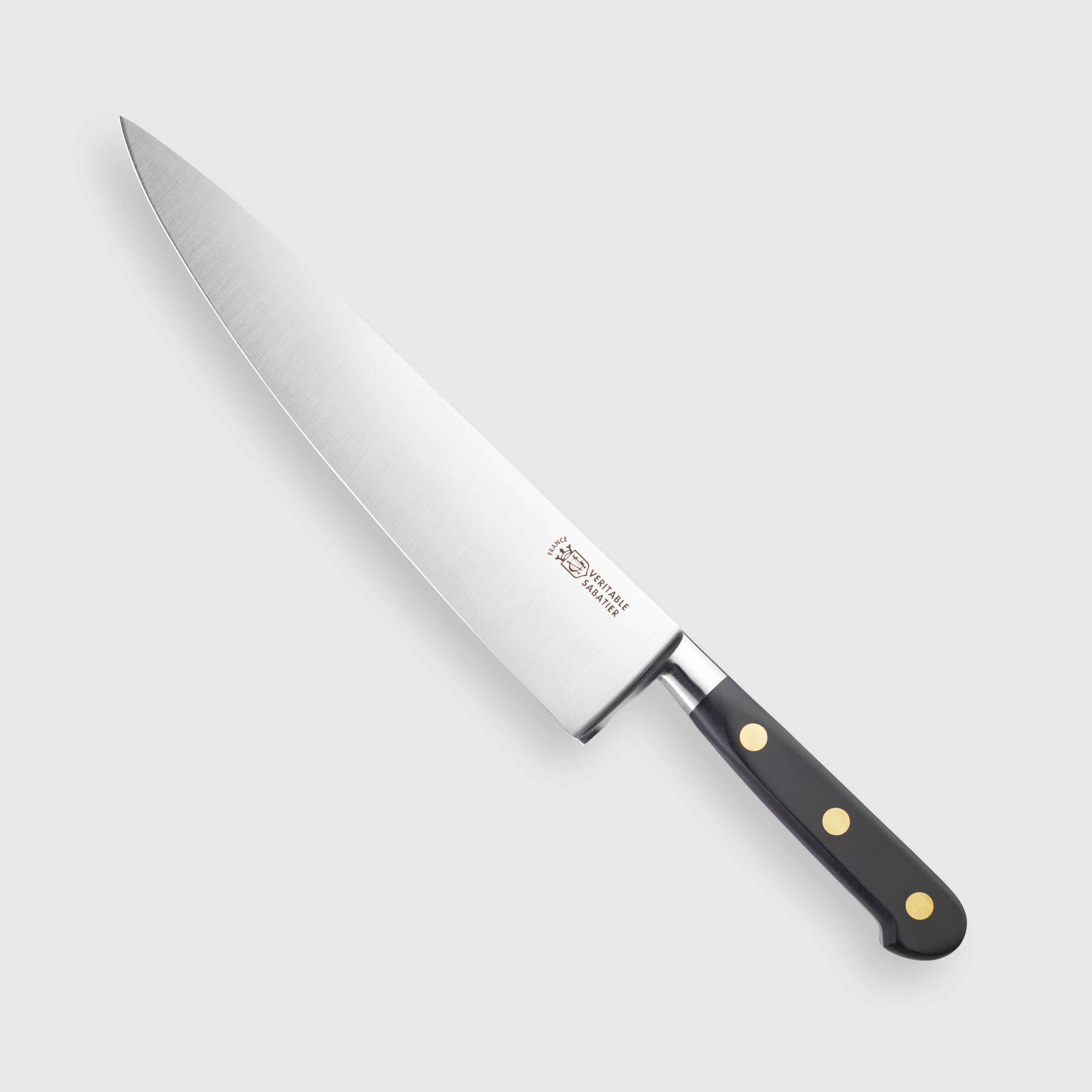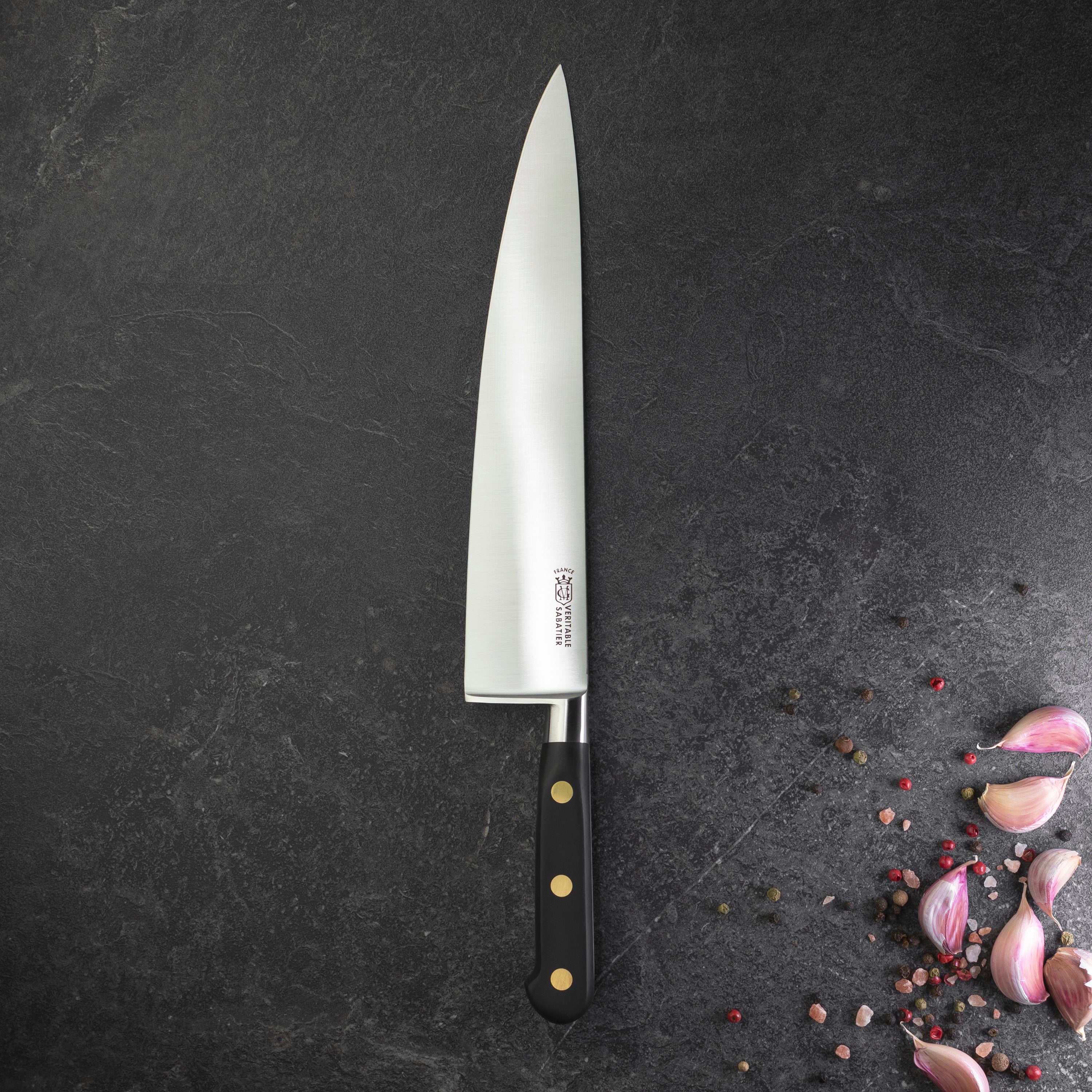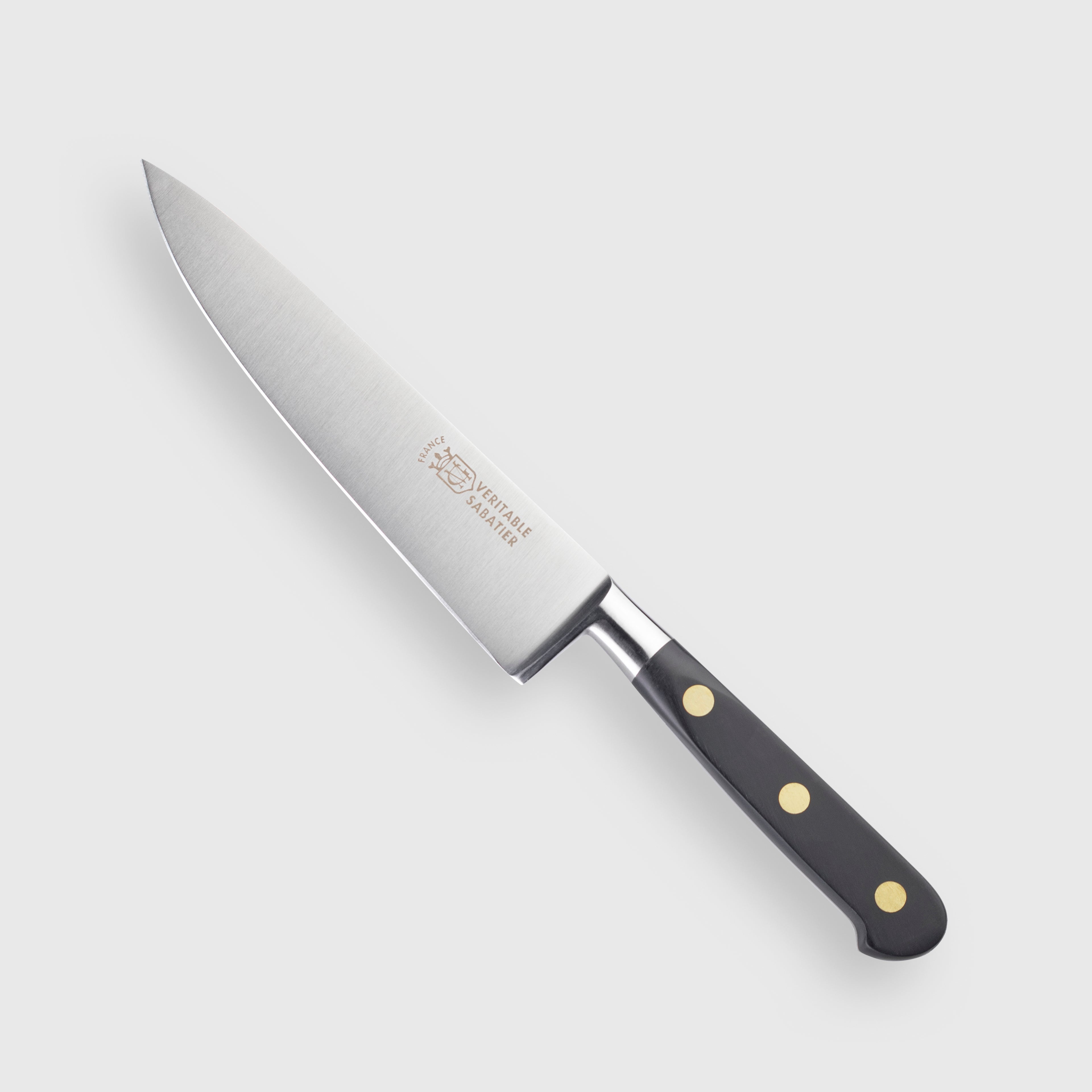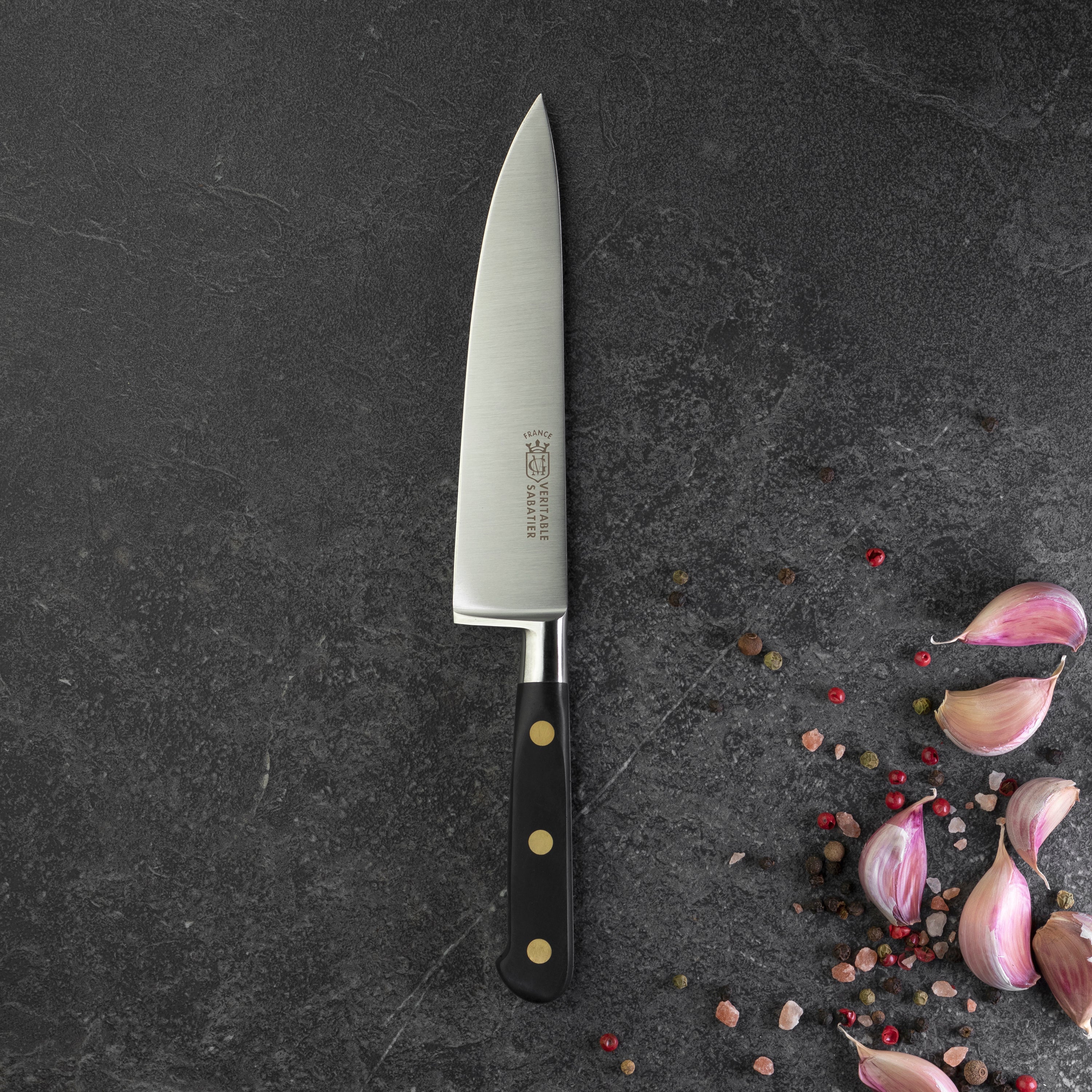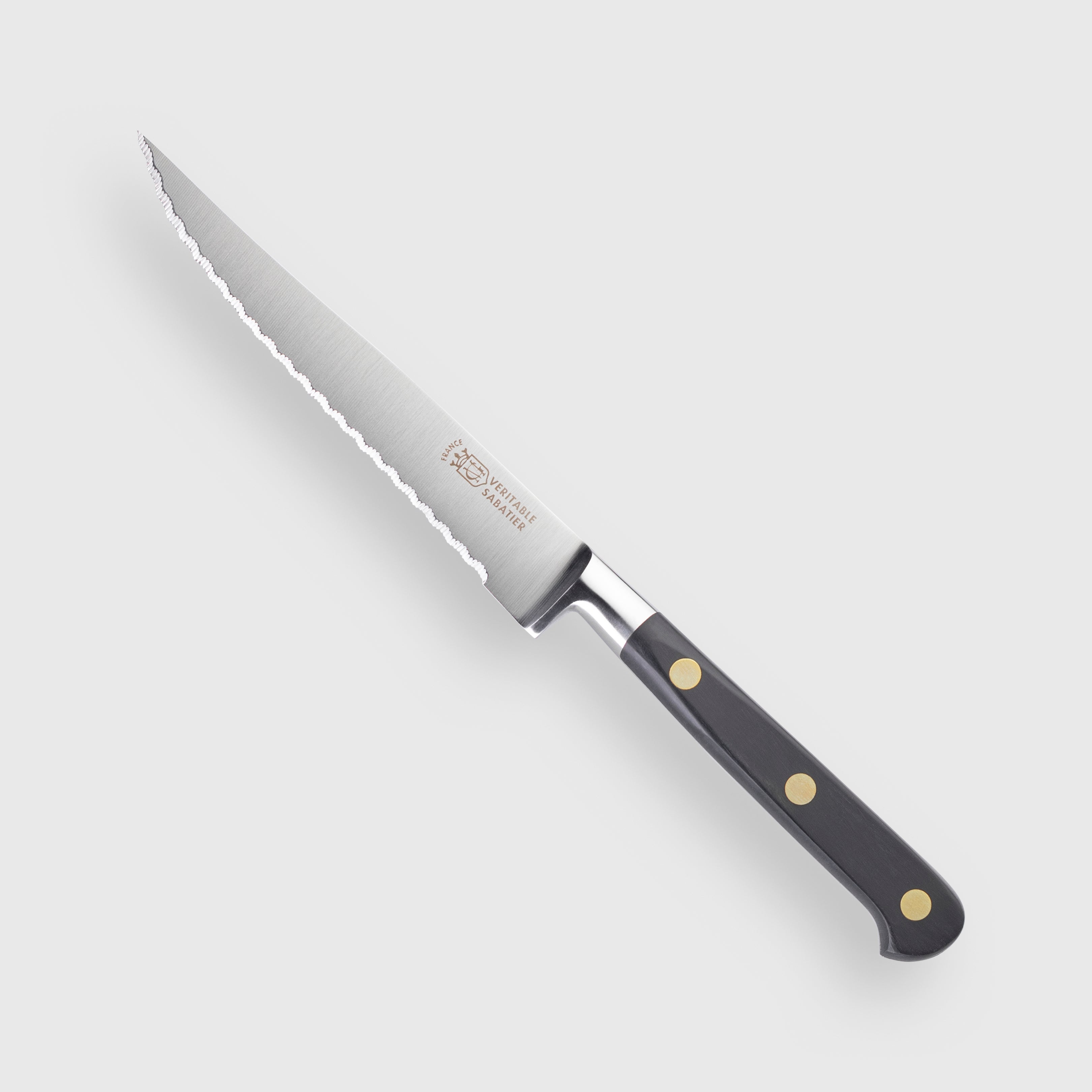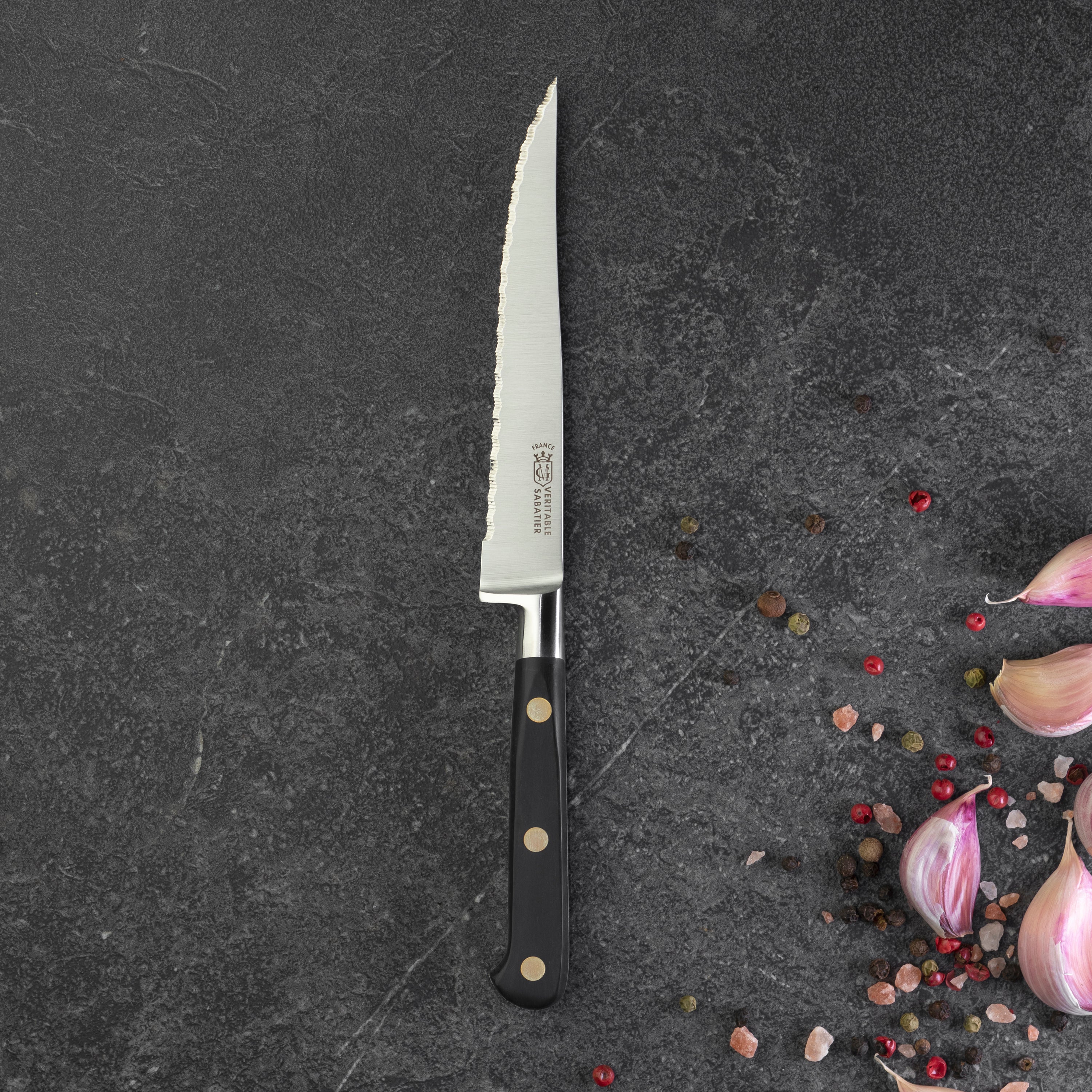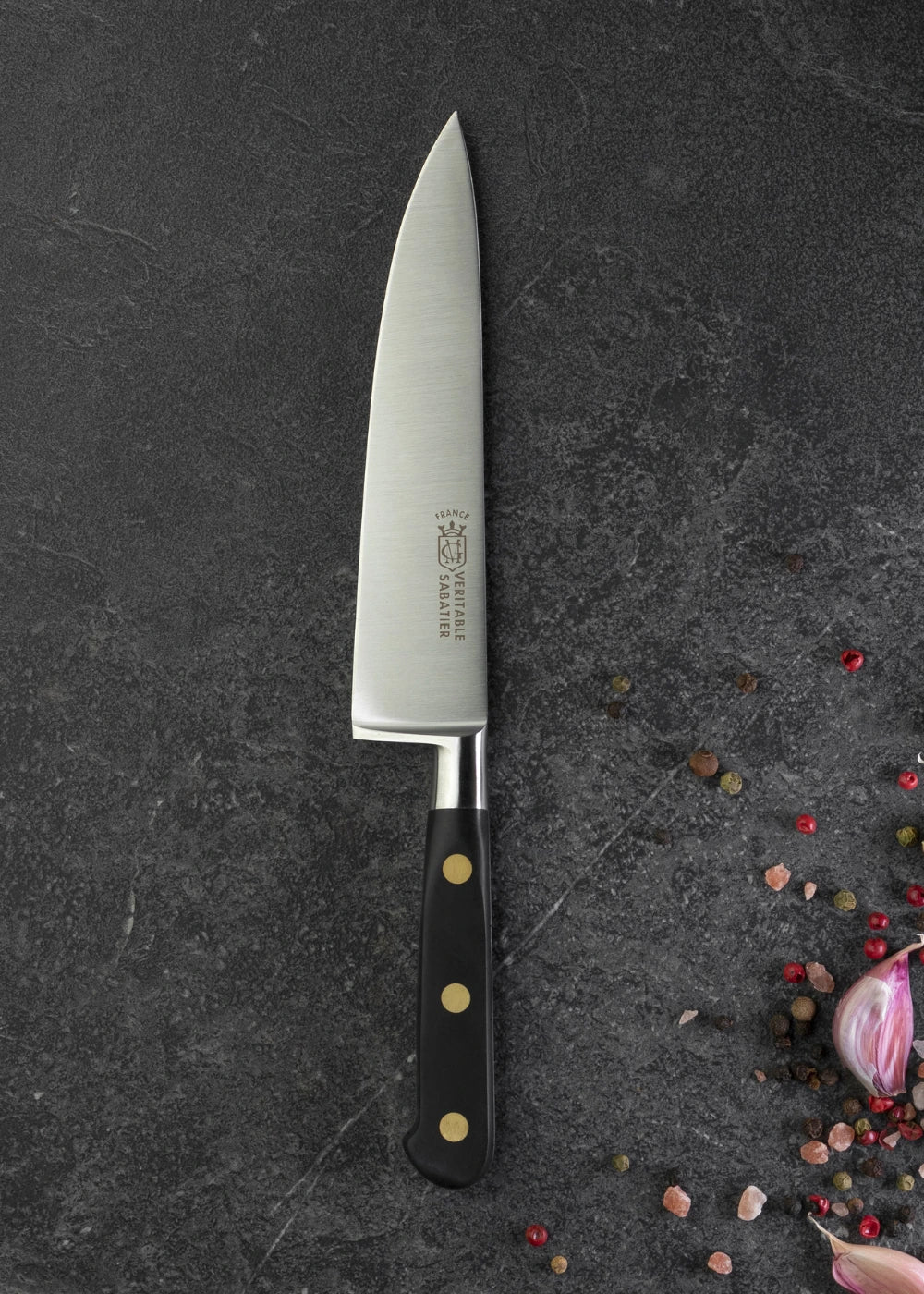
Véritable Sabatier Knives
Crafted in Thiers, France
The Véritable Sabatier collection represents the true heritage of French knife-making, handcrafted in Thiers, France—the original home of the Sabatier name. Unlike many modern knives that are stamped from flat steel, Véritable Sabatier knives are drop-forged from a single piece of high-quality, high-carbon stainless steel. The steel is hammered and folded, creating a super strong, durable blade that retains its edge far longer than standard knife steel. Each blade is precision ground and honed to an exacting angle, ensuring maximum cutting performance and long-lasting sharpness.
The collection includes a suite of 9 essential knife types and a honing steel, offering everything you need for professional-level food prep. These knives are well balanced, razor sharp, and feature a three brass rivet handle design to secure the tough, high-density handle to the blade tang. These knives are highly regarded for their quality by professional chefs.
Key Features
- Drop-Forged ConstructionForged from a single piece of high-carbon stainless steel
- Expert CraftsmanshipExpertly crafted in Thiers, the historic knife-making capital of France
- Precision Honed BladesEach blade is precision ground and honed to an exact angle
FAQs
"Sabatier" is a name that resonates with a rich tradition of exceptional quality in the world of kitchen knives, hailing from the renowned Thiers region of France, known as the cutlery capital! The name itself doesn't directly translate from French but it is a hallmark of craftsmanship and excellence, embedded in centuries of knife-making artistry. It's fascinating to note that "Sabatier" isn't just any word; it represents a legacy. Several brands, including the prestigious "Lion Sabatier," proudly carry this name, each contributing to the enduring legacy of unmatched quality and performance in kitchens around the globe. Now, that's something to get excited about!
Ah, the question of which is the "real" Sabatier is one that sparks much interest and conversation among culinary enthusiasts! The truth is, there isn't just one "real" Sabatier due to the way the name has been used over time. In the past, the Sabatier name was not trademarked, which led to various manufacturers in the Thiers region of France adopting it for their high-quality kitchen knives.
Each Sabatier brand, such as Lion Sabatier or Veritable Sabatier, brings its own flair and dedication to craftsmanship to the table, contributing to the rich tapestry of quality and excellence associated with the name. These brands each uphold the rigorous standards of traditional French knife-making, ensuring that whether you're a professional chef or a home cooking enthusiast, you're getting a piece of culinary history designed to elevate your cooking experience. So, while the search for the "real" Sabatier might lead you down a path of multiple brands, it's the shared commitment to quality and heritage that truly defines the essence of Sabatier. We chose to stock the Lion and Veritable Sabatier due to the exceptional quality of both the ranges.
Sabatier knives carry with them not just the artistry and craftsmanship of Thiers, France, but also a storied legacy that dates back to the early 19th century. The Sabatier name began to forge its reputation in the 1800s, with several families in Thiers adopting the name for their high-quality kitchen knives, making it a symbol of excellence in the culinary world.
Maintaining your Sabatier knives involves several essential practices to ensure they stay sharp, durable, and in top condition:
- Cleaning: Always wash your Sabatier knives by hand with warm water and mild detergent immediately after use. It's important to avoid using the dishwasher, as the harsh environment can damage both the blade and the handle over time. After washing, dry the knives completely with a soft cloth to prevent any rust formation.
- Honing: Regular honing is key to keeping your Sabatier knives sharp and maintaining their edge. Use a honing steel before or after each use to realign the blade's edge. Hold the steel vertically and gently slide the knife down and across the steel at a 20-degree angle.
- Sharpening: In addition to regular honing, your Sabatier knives will need periodic sharpening, typically once or twice a year depending on how frequently you use them. You can sharpen your knives using a whetstone, a handheld sharpener, or opt for professional sharpening services.
- Storage: Proper storage is crucial for the longevity of your knives. Store your Sabatier knives in a knife block, on a magnetic strip, or within protective sheaths. This not only prevents the blades from dulling but also helps avoid accidents. Storing knives in a drawer is not recommended, as they can easily get damaged.
- Cutting Surface: To maintain the sharpness of your knife edges, always use wooden or plastic cutting boards. Cutting on hard surfaces like glass, metal, or stone can quickly dull your knives.
- Avoid Misuse: Remember that Sabatier knives are specifically designed for cutting food. Avoid using them for any non-food related tasks, as this can damage the blade and potentially void the warranty.
- Handle with Care: Always be mindful of the knife's balance and handle it with care. Avoid dropping or carelessly tossing your knives, as this can lead to damage to both the blade and the handle.
Shop at Cotswold Knife Company with confidence, knowing we are a verified stockist of Veritable Sabatier knives.

